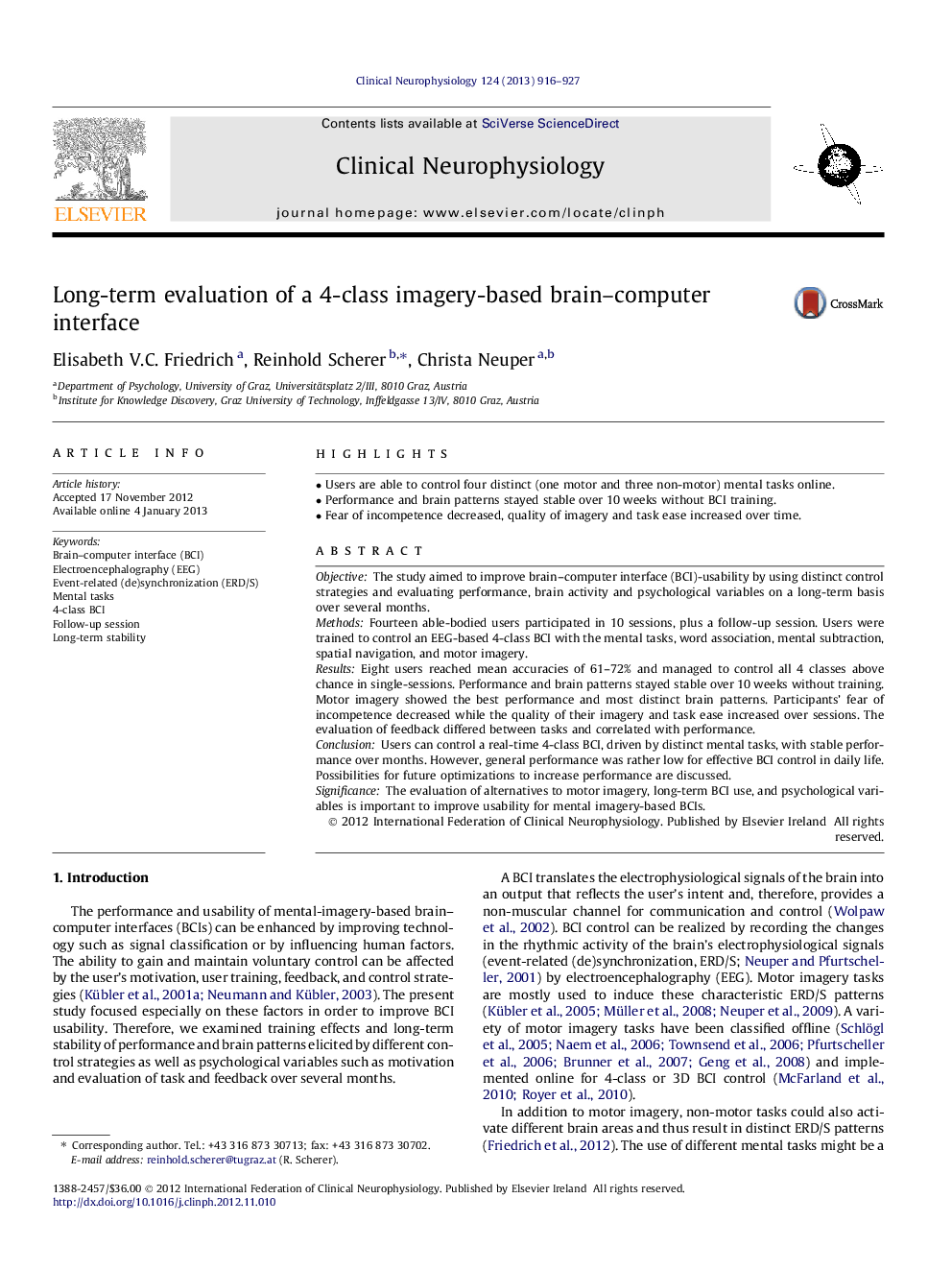| Article ID | Journal | Published Year | Pages | File Type |
|---|---|---|---|---|
| 3044331 | Clinical Neurophysiology | 2013 | 12 Pages |
ObjectiveThe study aimed to improve brain–computer interface (BCI)-usability by using distinct control strategies and evaluating performance, brain activity and psychological variables on a long-term basis over several months.MethodsFourteen able-bodied users participated in 10 sessions, plus a follow-up session. Users were trained to control an EEG-based 4-class BCI with the mental tasks, word association, mental subtraction, spatial navigation, and motor imagery.ResultsEight users reached mean accuracies of 61–72% and managed to control all 4 classes above chance in single-sessions. Performance and brain patterns stayed stable over 10 weeks without training. Motor imagery showed the best performance and most distinct brain patterns. Participants’ fear of incompetence decreased while the quality of their imagery and task ease increased over sessions. The evaluation of feedback differed between tasks and correlated with performance.ConclusionUsers can control a real-time 4-class BCI, driven by distinct mental tasks, with stable performance over months. However, general performance was rather low for effective BCI control in daily life. Possibilities for future optimizations to increase performance are discussed.SignificanceThe evaluation of alternatives to motor imagery, long-term BCI use, and psychological variables is important to improve usability for mental imagery-based BCIs.
► Users are able to control four distinct (one motor and three non-motor) mental tasks online. ► Performance and brain patterns stayed stable over 10 weeks without BCI training. ► Fear of incompetence decreased, quality of imagery and task ease increased over time.
